sponsored content
Generations of travelers have visited the quintessential mountain town of Gatlinburg, TN. Surrounded on three sides by the Great Smoky Mountains National Park, Gatlinburg is known as “The Gateway to the Smokies.” It’s an ideal vacation destination for families seeking a nature-centric escape or for those looking to take to the bustling streets of downtown Gatlinburg with its shopping, attractions and myriad restaurants. Others may prefer to hunker down in one of Gatlinburg’s many luxury accommodation options hidden away on the mountain, where families can revel in anything from cozy condos to massive chalets boasting as many as 13 bedrooms and indoor pools.
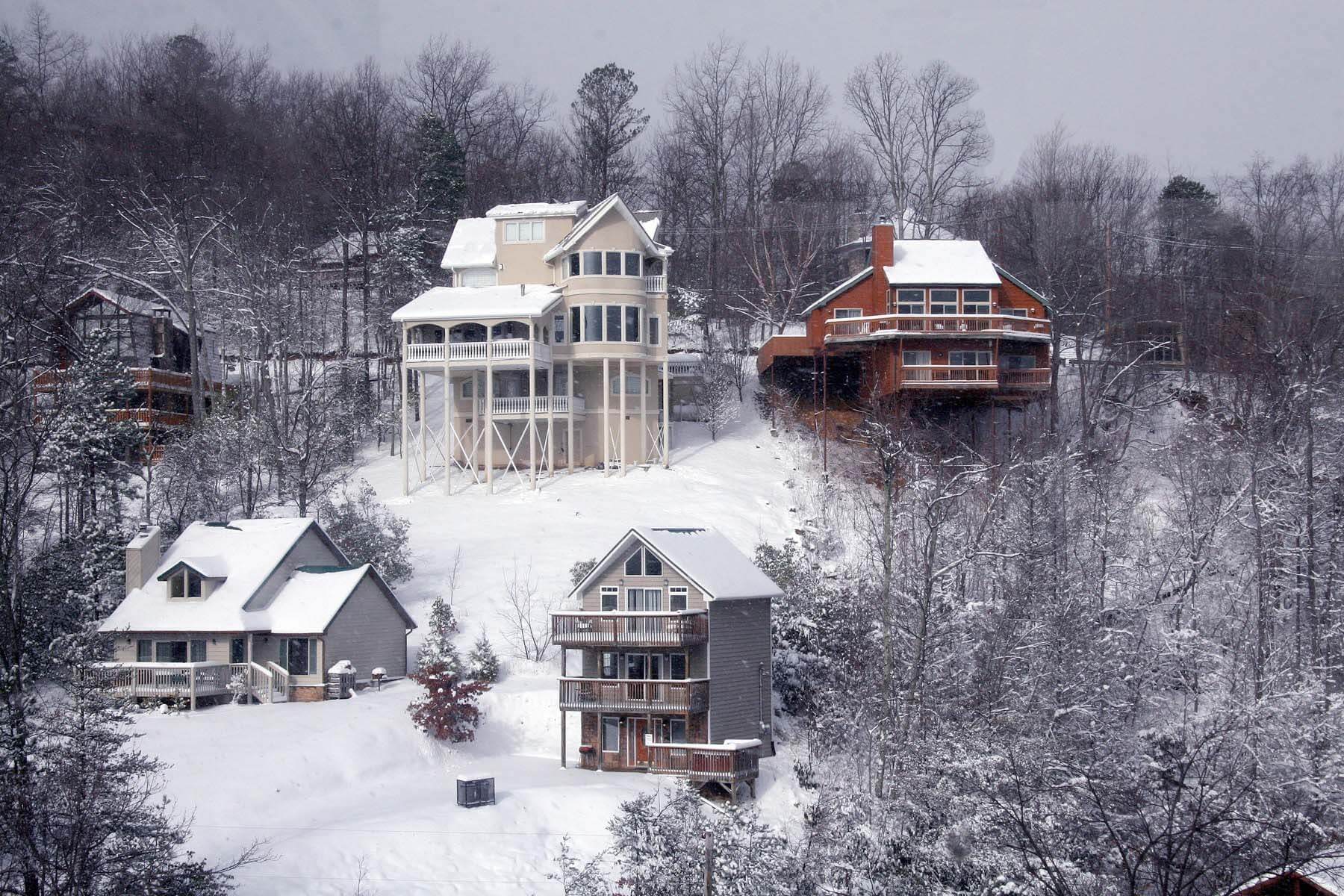
Fully recovered from the 2016 wildfires that swept through the area, Gatlinburg is having a bit of a moment as a preferred destination thanks to its proximity to the Great Smoky Mountains National Park, the most-visited property in the entire national parks system, as well as being a fantastic spot to escape for a long weekend. While this renaissance of popularity is notable, it’s not new, because Gatlinburg has been growing as a tourist destination for decades, evolving from a frontier community to a mountain mecca.
The first American settler in the area was a farmer from Edgefield, SC, named William Ogle. In 1802, Ogle traveled to the Smokies to scout out a new homestead for his family. He was so impressed by the variety of flora, fauna and hunting grounds in the surrounding forests that he wrote home to his family to tell them he had discovered “The Land of Paradise,” and he began to make plans to bring his kin to their new home. With the help of his Cherokee neighbors, Ogle hewed trees and prepared the lumber to construct a new cabin home upon his anticipated return after retrieving his family from South Carolina.
Sadly, Ogle passed away from malaria in South Carolina before he could make the journey back to his beloved new home site. His wife, Martha Jane Huskey Ogle, vowed to fulfill her husband’s wishes and made the difficult passage across the mountains to bring her children and several other family members to what soon became known as White Oak Flats, named for the abundance of that particular variety of trees in the area. The traveling group discovered Ogle’s original cleared site with the building materials for their new home waiting for them. They got to work constructing the first cabin, which you can still visit in downtown Gatlinburg. (No indoor pool, though!)
RELATED: The Southern Arts & Crafts Community You Need to Visit
After the War of 1812, many veterans took advantage of the U.S. government’s grant of 50 acres of land to move to the area around White Oak Flats. The original family names of these and previous settlers like Reagan, Crockett, Ownby, Bohanon, McCarter and Huskey that joined the Ogles are still seen on businesses throughout the region as their descendants remain in Gatlinburg.
A preacher named Radford Gatlin moved to the area in 1854 and opened the second general store in White Oak Flats, in competition with the Ogle family mercantile. Gatlin lobbied to have a post office opened inside his store, and when you own the building, you get to name the postal stop. So, Gatlinburg was born. The resulting strife and conflicts about the town’s involvement in the Civil War led to Gatlin basically being run out of town in the 1860s, but his name lives on.

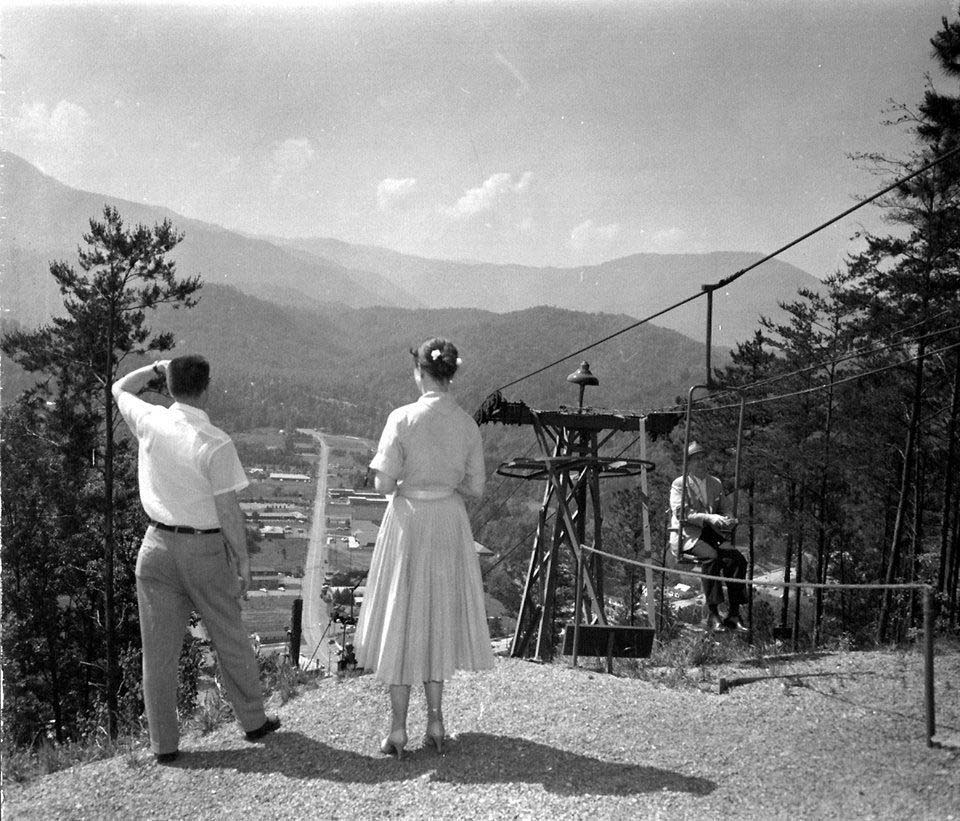

The first decades of the 20th century were dominated by the timber industry as the logging trade increased their harvests from the forests around Gatlinburg, and new sawmills sprang up along the many available sources of running water to power the operations. Visitors can take a trip through this industrial history thanks to the Roaring Fork Motor Nature Trail, a five-mile, one-way loop that begins and ends near downtown Gatlinburg. From the comfort of your car or after short easy walks, you can observe gorgeous waterfalls, one of the Ogle family’s original farmsteads, and Ely’s Mill, an authentic re-creation of an early 20th-century mill operation.
As the lumber industry continued to grow, calls rang out to protect the forests of the Great Smoky Mountains, and tourists began to visit the area to experience the wonders they had read about in the writings of famous travel and fiction authors of the time, including Mary Noailles Murfree and Horace Kephart. In 1924, the Smoky Mountain Hiking Club was formed to draw further attention to the area as a natural wonder worthy of preservation.
With those tourists came some of the first major hotel and resort developments in Gatlinburg in the 1930s with the opening of The Greystone Hotel, Riverside Hotel, and The Historic Gatlinburg Inn. In fact, you can still stay in room 388 of The Gatlinburg Inn, the exact spot where, in 1967, a married couple of songwriters named Felice and Boudleaux Bryant were inspired by the lovely mountain surroundings to pen their most iconic tune, “Rocky Top.”
RELATED: A Top Southern Destination for Active Travel
As public attention about the beauty of the Smokies and Gatlinburg grew, Congress officially chartered the Great Smoky Mountains National Park in 1934, and within the first year after the park opened, the number of tourists traveling to Gatlinburg grew from an already impressive 40,000 to an astounding half-million visitors. President Franklin Delano Roosevelt formally dedicated the park on September 2, 1940, with a speech from the Roosevelt Monument at Newfound Gap near the Tennessee/North Carolina border in the middle of the park. In his speech, FDR praised the natural beauty of the region: “There are trees here that stood before our forefathers ever came to this continent; there are brooks that still run as clear as on the day the first pioneer cupped his hand and drank from them. In this Park, we shall conserve these trees, the pine, the red-bud, the dogwood, the azalea, the rhododendron, the trout and the thrush for the happiness of the American people.” Even while at the doorstep of the nation’s entry into WWII, Roosevelt felt it was important to draw attention to the magnificent natural area that surrounds Gatlinburg.
The second half of the 20th century saw even more development catering to the thousands of tourists visiting the region. The Gatlinburg SkyLift Park debuted in 1954 when Everett Kircher purchased an obsolete ski lift from a California resort and reassembled it to run from downtown Gatlinburg to the top of Crockett Mountain, where riders could enjoying sweeping vistas of the surrounding mountains and a view of the town from above. One of the longest-operating tourist attractions in the Smokies, SkyLift Park added a new marvel in 2019 with the opening of the Gatlinburg SkyBridge, the longest pedestrian suspension bridge in North America stretching almost 700 feet across the valley below. Even more exhilarating is a 30-foot section of glass panels forming the floor in the middle of the bridge to offer an unobstructed view of the valley floor 150 feet beneath your feet.


In 1962, the Gatlinburg Ski Resort opened as a private club, the only ski mountain in Tennessee and one of the farthest-south skiing destinations in the country. While it was, and still is, possible to drive up windy roads to get to the top of the mountain, it’s always more fun to take a more unusual method of ascent. So in 1973, Claude Anders built an aerial tram to carry visitors up to the resort in style. Realizing that if more people came to ski, more riders would buy tickets for his tram, Anders purchased the Gatlinburg Ski Resort in 1975 and rebranded it as Ober Gatlinburg, a Bavarian-themed winter wonderland with indoor and outdoor amusements, an ice rink, alpine slide, mini-golf, a small zoo, 10 ski runs, and a snow tubing hill.
Visitors were offered another opportunity to increase their altitude to improve their attitude when the Gatlinburg Space Needle opened to the public in 1970. Topping out at 407 feet tall, the Space Needle was the second tallest tower in Tennessee at the time and still offers breathtaking wraparound views of the Smokies and Gatlinburg.

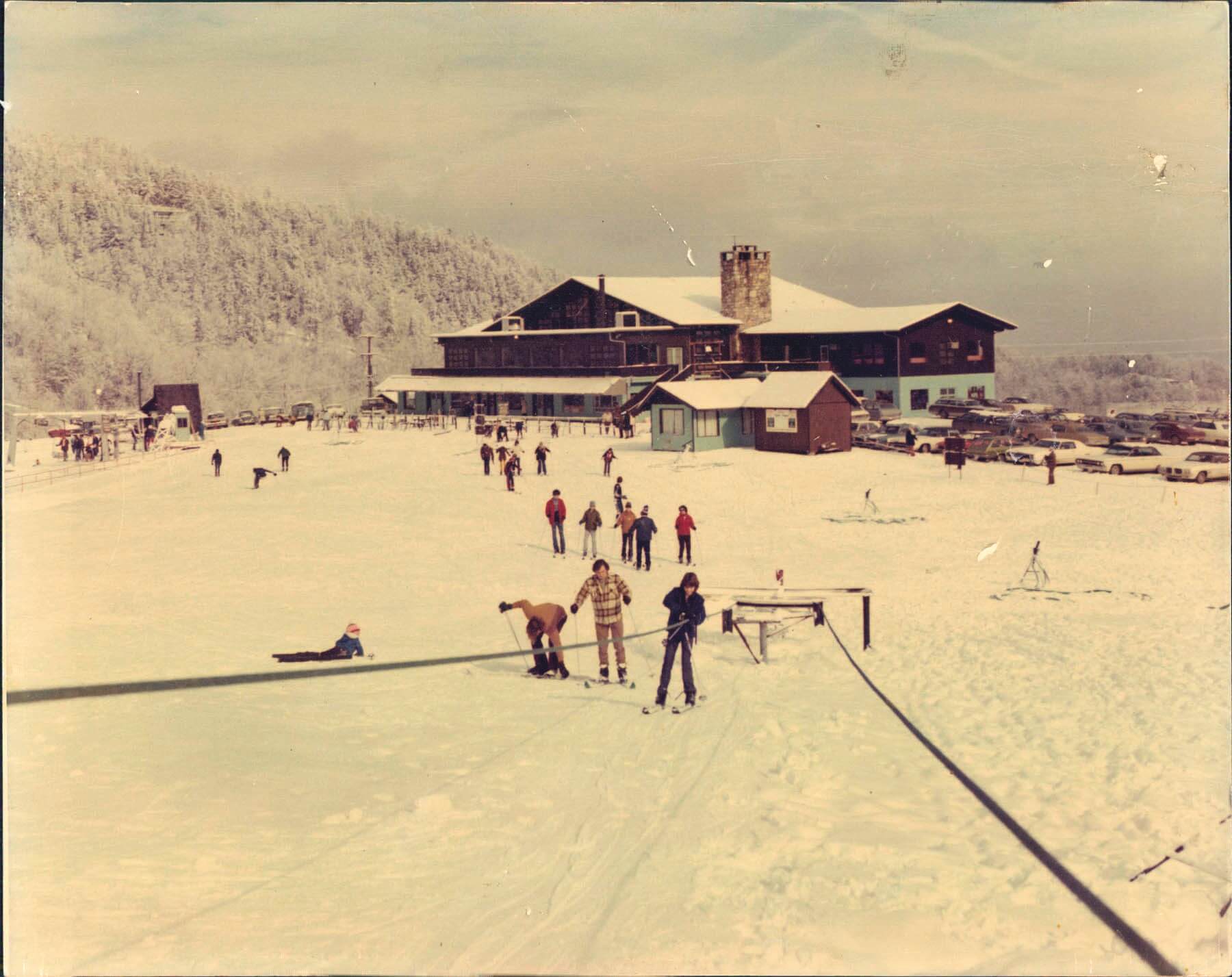
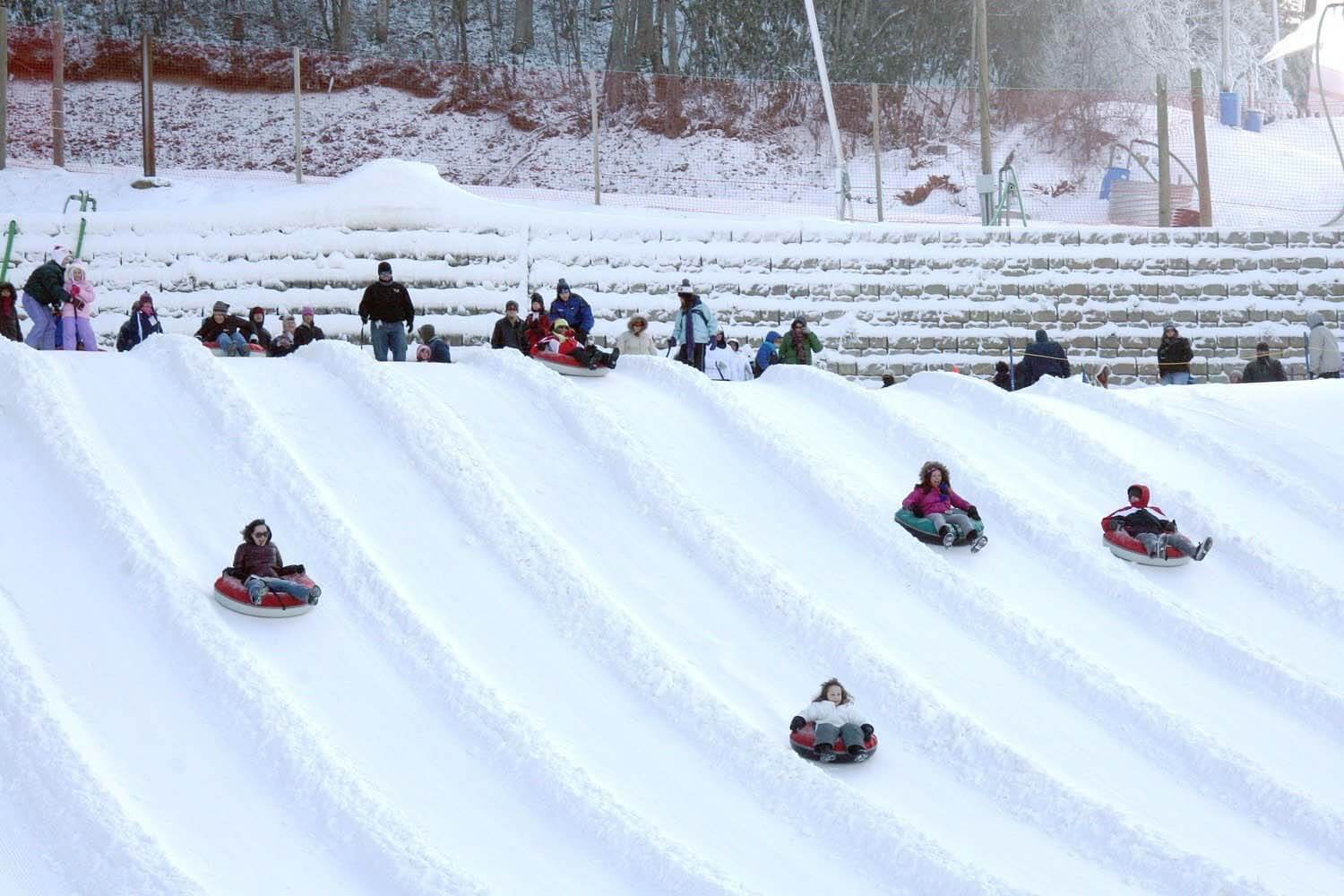
The 1970s focused on the development of Gatlinburg’s lively downtown with the establishment of new attractions that drew the tourists in during their times of respite outside of the Great Smoky Mountains National Park. Many of them are still in operation for guests to visit today such as Ripley’s Believe it or Not Museum, Hillbilly Golf, and The Village Shops. Even older spots that are still worth a visit include Pancake Pantry and Ole Smoky Candy Kitchen, where they’ve been stretching the saltwater taffy since 1950.
RELATED: A Shopping Destination Like No Other
In 1986, tourism in the area got a major boost when country music icon Dolly Parton purchased an interest in the old Silver Dollar City amusement park in Pigeon Forge and renamed the attraction Dollywood. Suddenly, visitors started extending their Gatlinburg vacations to include some time at the park, and both Pigeon Forge and Dolly’s hometown of Sevierville began to attract even more attention to the three sister cities.

As more guests made the pilgrimage to the “house that Dolly built,” Gatlinburg continued to add new enticements to attract visitors as well, starting up a huge festival of holiday lights called Winterfest in 1990 as a countywide effort to entice visitors to come for a visit in winter season – making Gatlinburg and surrounding cities a year-round destination. This annual event features parades and decorations in the months surrounding Christmas. The Ripley’s Aquarium of the Smokies opened in 2000, inviting guests to experience a modern aquarium facility that is consistently ranked as one of the most spectacular aquariums in the country where guests can peruse multiple massive aquatic habitats showcasing thousands of fish and mammals as well as the wildly popular penguin exhibit.
RELATED: The Most Fun Holiday Tradition Your Family Will Love
Continuously evolving and improving as a tourist destination, Gatlinburg unveiled a major new development in 2017 with the opening of Anakeesta, a 70-acre outdoor family adventure park. Travel to Anakeesta from downtown Gatlinburg via the Chondola’s open-air 4-person chair lift, enclosed 6-person gondola cabin or on Ridge Rambler military vehicles, and you’ll discover opportunities for both adventurous fun and relaxation for the whole family. Take zipline rides, walk across 16 hanging bridges, ride the Rail Runner mountain coaster, check out the new AnaVista Tower — now the tallest spot in Gatlinburg — or just chill along the Memorial Forest Walk and Vista Gardens and relax at a spot by a firepit to enjoy stirring views of towering Mt. LeConte. The little ones will love it too — the Vista Gardens has newly expanded children’s play areas including TreeVenture Challenge Course and Willow Man. And make sure to stop by the new Black Bear Village, which has new dining and retail options.
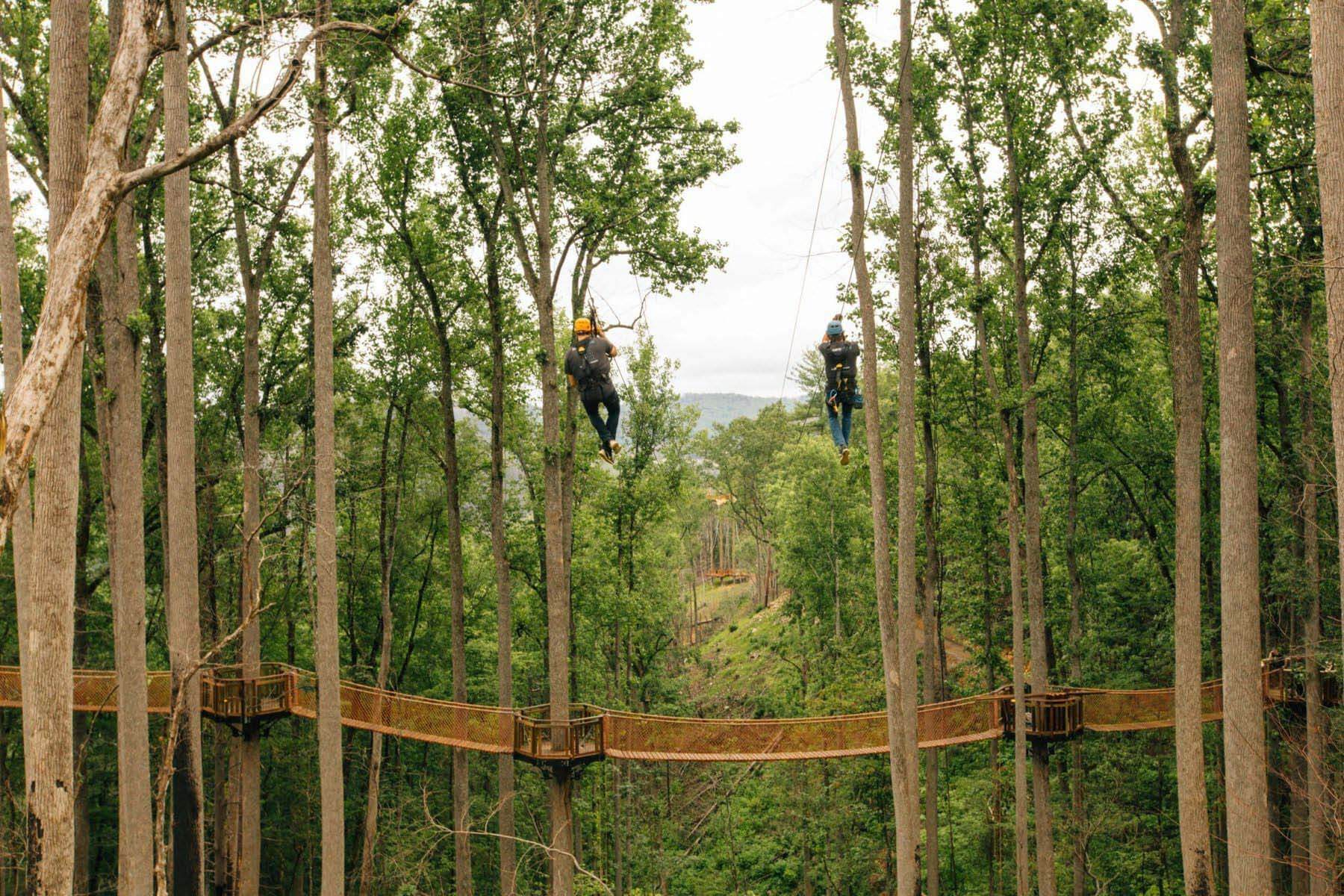

There is no shortage of things to do in Gatlinburg, and the choices can be a bit dizzying. But most importantly, this lovely mountain town offers whatever sort of experience you and your family desire. This attitude of hospitality has been welcoming guests for decades, stretching back to when the first Cherokee residents offered to help a South Carolina trapper learn how to live off the land and chop the trees for his family homestead.
This article is sponsored by the Gatlinburg Convention and Visitors Bureau. All photography provided by the Gatlinburg Convention and Visitors Bureau unless otherwise noted. For more info, visit the town’s official website at gatlinburg.com.



















